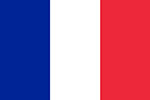The Portrieux

La jetée du Portrieux – Emile Querangal – vers 1830
Shops and Hotels
You could find everything in the village: food, hardware, equipment for sailors and so on. You can imagine the streets crowded with carts and stalls. Coaster ships could arrive day or night, and there were many small inns where crews could eat. A fish market was held daily in front of the chapel of Sainte Anne. The blacksmith’s workshop was nearby. Between 1870 and 1908, a large lime kiln operated in Portrieux to meet construction needs. It employed up to a hundred workers, some of whom were sailors returning from fishing trips. To fuel the kiln, coal from Swansea in Wales and limestone from Regneville in Normandy were unloaded at the port and stored in a large warehouse at the bottom of what is now Rue Clémenceau.
At the port, the large weekly market attracted people from the surrounding area. It still takes place on Monday mornings. A horse and cattle fair was held three times a year, in January, June and September.

Until the 1970s, Le Portrieux was home to a large number of food shops, including grocery shops, creameries, bakeries, delicatessens, butchers and fishmongers, as well as other businesses such as hardware shops, shoe repair shops, dressmakers’ workshops and all kinds of articles for sale, all of which old-timers remember with a touch of nostalgia.
A FISHING CAMPAIGN
Le Portrieux mainly sailed to Newfoundland and, at the end of the 19th century, to Iceland. Fishing campaigns were the rhythm of village life.
At the end of January, the sailors were enrolled and then fitted out. The sailors received an advance from the shipowner to buy linen, cutlery, tobacco, straw mattresses, oiled work clothes, clog boots and so on. At the same time, the ships had to be fitted out and provisioned with rigging, navigational instruments, salt for cod, food for several months and a first-aid kit.
In mid-March, it was time to set sail for five or six months of fishing, including several weeks’ crossing.
In September or October, the crews finally returned. Some of the ships left directly to sell the catch in Marseille, Italy, Spain or North Africa. They returned just before the next campaign, loaded with wine, soap, oil, salt and, for example, an altar for the chapel!
In 1820, at the height of the Newfoundland fishery, 10 ships left Le Portrieux for Newfoundland with 550 sailors on board. In 1872, 4 ships left for Newfoundland with 93 men, and 11 for Iceland with 240 men. Fishing for Newfoundland ceased in 1886, and the last campaign to Iceland took place in 1920.

The schooner Le Martial left for Iceland. She never returned…
In the photos below, you can see that Newfoundlanders are heavy ships that carry canoes in their holds to fish from the shore. The fish is prepared, salted and dried on land, where various facilities are set up Icelandic schooners are thin and light. The sailors do not disembark and fish from the shore. The fish is prepared and salted on board the ship.
The arrival of “bathers” and the development of hotels and guesthouses
The decline in fishing coincided with the beginning of the sea bathing craze. In 1863, the railway arrived in Saint Brieuc. Travellers wishing to go to the seaside could take a stagecoach that took them to Portrieux in five hours. A little later, in 1905, the “petit train des Côtes du Nord” arrived at the stations of Portrieux, now known as “Portrieux les bains”, and Saint-Quay in just 1? hours. Saint-Quay-Portrieux then changed its face and turned to tourism. Hotels and guesthouses lined the harbour, and villas multiplied. Saint Quay Portrieux went from being a fishing village to a seaside tourist and commercial centre.
Alleys, houses and villas.
In this painting, you can see the shore coming up to the foot of the houses, the fishermen’s cottages next to the mansions and the very dense housing. The heart of Portrieux has not changed much.

Anonyme – sans date.
Le Portrieux is criss-crossed by picturesque little lanes with evocative names: venelle du soleil levant, venelle des islandais, venelle du Port à la Chapelle, venelle des pêcheurs, venelle Saint-Eloi, venelle des Courtieux, venelle de l’Audience (because in the oratory and then in the chapel, from the 13th century until the Revolution, high and low justice was administered and judgements were posted on the chapel doors).
On the sailors’ and fishermen’s side, the small houses with their rudimentary comforts, squeezed together, often communicated via their courtyards or small strip gardens. Water had to be fetched from the fountain, but sewers, running water and electricity were installed from the end of the 19th century.
The houses of the shipowners were more opulent.
Their common feature was that they were close to the port, with a view of the ships, so that they could keep an eye on departures, arrivals, loading and unloading. Sometimes, if they weren’t on the harbour, a turret would provide a suitable view.
In Portrieux, these were “small” shipowners, owning only a few boats, nothing like the big families in Saint Malo or Nantes.
In the second half of the 19th century and again in the 20th century, elegant villas were built in the surrounding area, generally close to the sea, but the character of Portrieux remains.






















